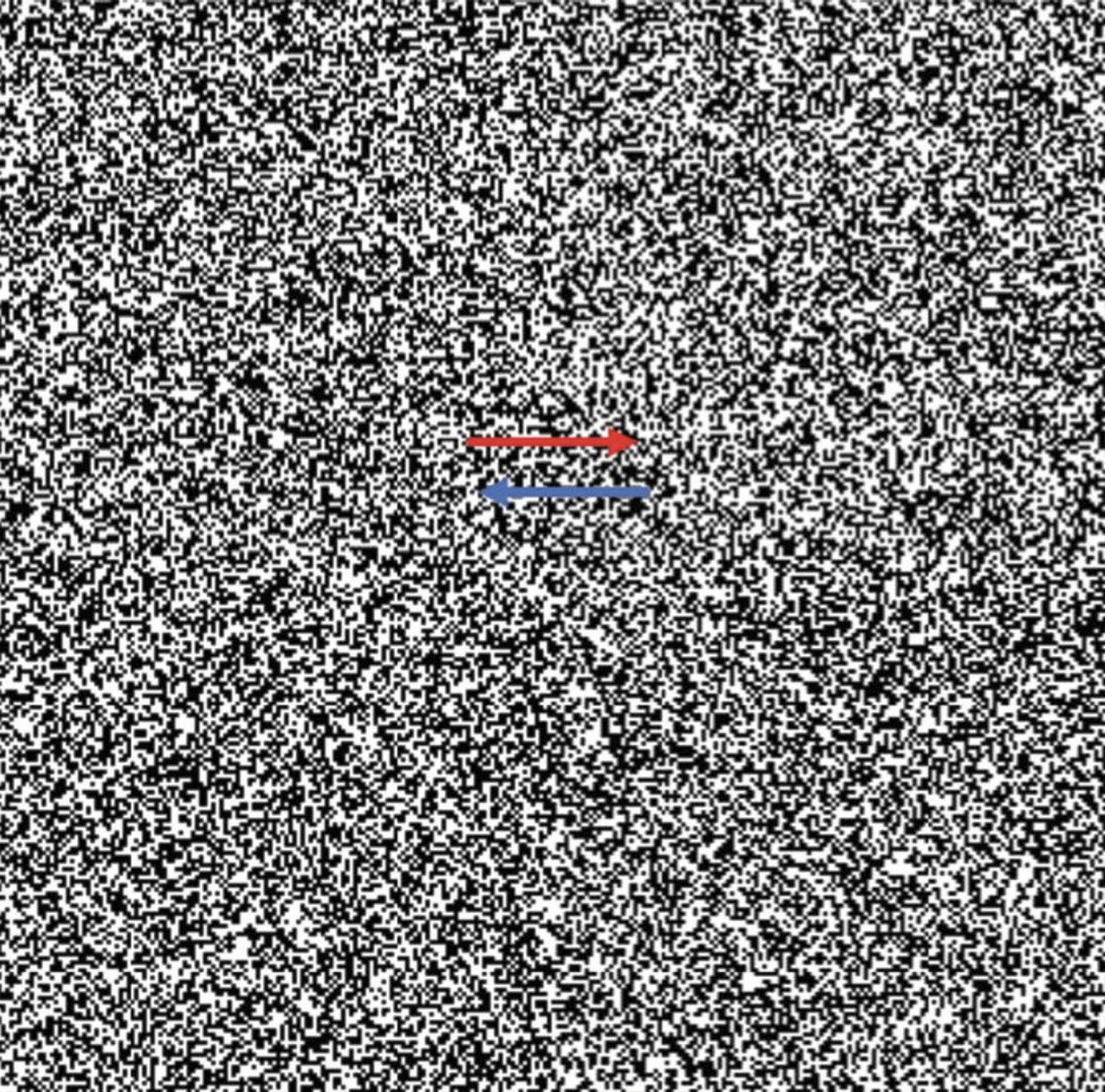Consider viewing a swarm of bees, a school of fish, or a herd of cattle moving. How can you tell which direction they are moving?. Thus, to be able to perceive the overall motion, we have to be able to put all the motion together as part of a single perception. What we are talking about is global motion, and this situation also shows the importance of the correspondence problem for motion perception. Examine the figure below. When the random dot pattern moves a short distance, people see the dots moving together in a coherent pattern. They pick up the global motion. If the dots move by a greater distance, the ability of our visual system to tracks the dots breaks down, the visual system can no longer successfully complete the correspondence problem, and the person sees different directions of motion in different parts of the square. This person now sees in local motion.

In this activity, you can cause the random dots to move back and forth. Adjust the step size and find the largest step where you can still see the global motion.
To see the illustration in full screen, which is recommended, press the Full Screen button, which appears at the top of the page.
On the Illustration tab, you can start, stop and alter the motion of squares to experience optic flow.
Below is a list of the ways that you can alter the illustration. The settings include the following:
Move: Start the dot field moving. The button will change to a 'Stop' button when the dots are moving.
Size of Motion Step: how far the dot field moves during a motion step.
Direction of Motion: The dots of the small square change randomly during
motion.
Size of Dots: Sets the size of the dots used to make up the field.
Size of View: How big is the area filled with dots.
Pressing this button restores the settings to their default values.